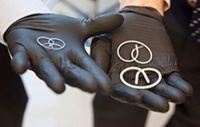At present, the only treatment that reduces the symptoms of painful and very frequent urination is an infusion of the drug lidocaine into the bladder through a catheter. But the treatment only provides brief relief and needs to be repeated frequently.
Now, researchers at MIT have developed a device that may provide more effective treatment. The device itself comprises a small medical-grade silicone tube that has been laser drilled then filled with the solid drug. A shape-memory wire made of nitinol is then threaded through the tube, which is then straightened out, placed in a catheter, and inserted into the bladder.
As soon as it is released there, the nitinol wire causes the device to spring back into a pretzel-like shape, which prevents it from being expelled from the bladder during urination, and thus it can steadily release the drug over a two-week period − long enough to treat an interstitial cystitis flare-up, something that may occur about three times a year.
The device, developed by Dr Heejin Lee and Prof Michael Cima, is now undergoing phase-one clinical trials. Though it is initially being tested specifically for interstitial cystitis, Prof Cima says that the same delivery system − if all goes well in the clinical trials − could also be used to deliver drugs for other bladder diseases, including chemotherapy for bladder cancer.
’The biggest problem with these treatments is the patients don’t get the drug long enough,’ Cima said, noting that doctors try to make up for this shortcoming by using very high concentrations of drugs. The new device could potentially lead to smaller dosages, thus reducing side effects and adverse reactions.

If all goes well, Cima said, the device could become an approved medical product by 2014. Already, a MIT spinoff company called Taris Biomedical has been established to carry out testing and bring the device into production. Dr Lee, who developed the device as part of his doctoral thesis work with funding from a Deshpande Center grant, is now working for the company as a product-development scientist.





Swiss geoengineering start-up targets methane removal
No mention whatsoever about the effect of increased methane levels/iron chloride in the ocean on the pH and chemical properties of the ocean - are we...